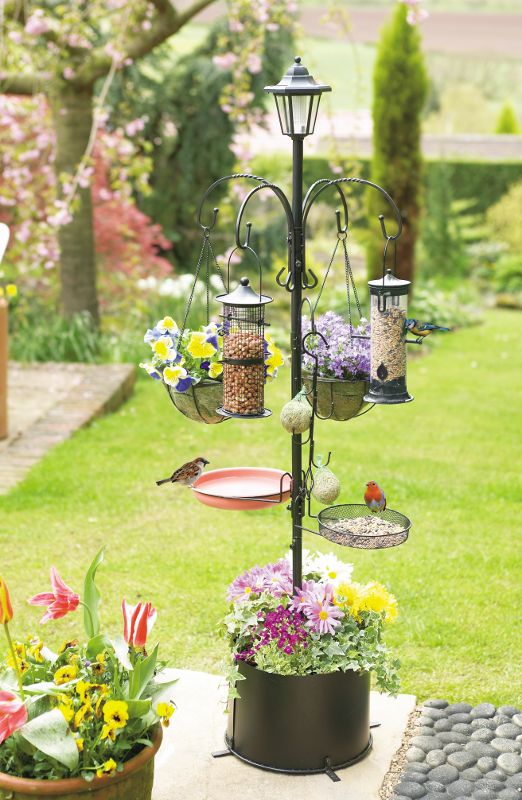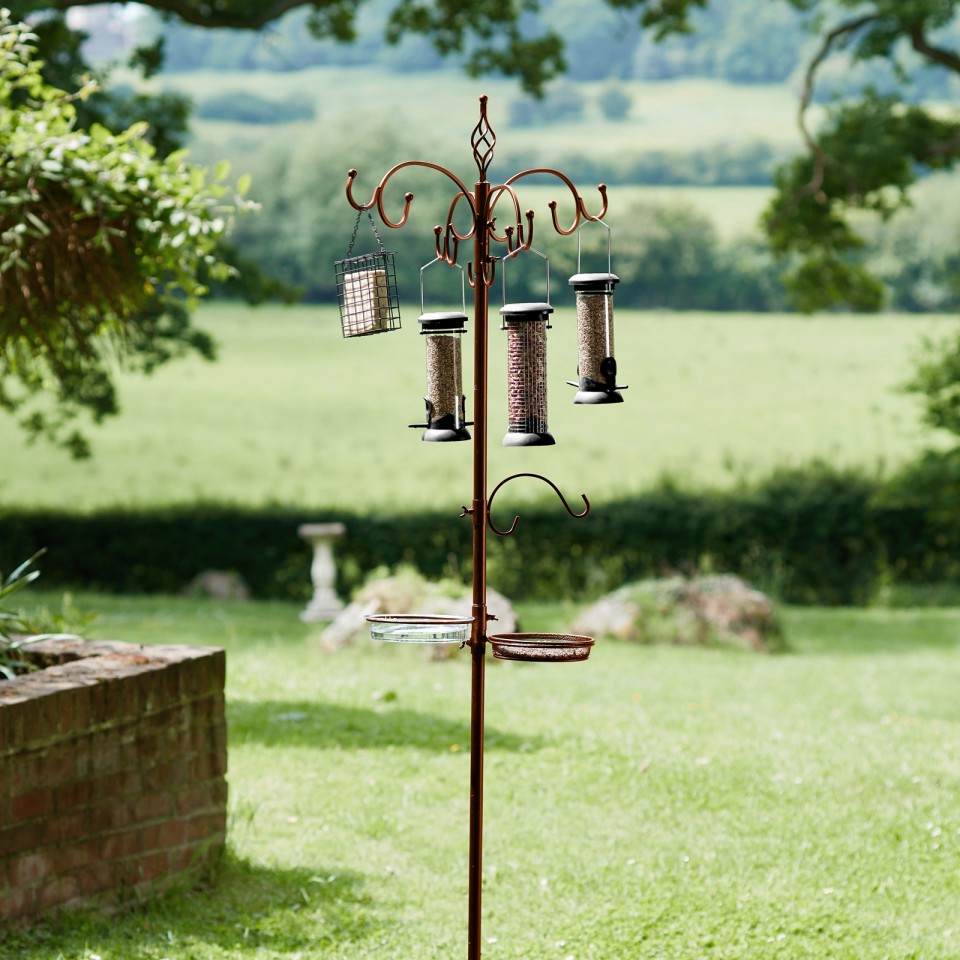Creating a beautiful backyard or garden is a dream for many nature lovers, and one of the best ways to enhance your outdoor space is by installing a decorative bird feeding station. Not only does it provide a reliable food source for our feathered friends, but it also adds charm and character to your surroundings. In this article, we’ll delve into the various aspects of decorative bird feeding stations, including their benefits, types, installation tips, and maintenance. Plus, I’ll share personal experiences to help you better understand the joy these stations can bring.
Why Choose a Decorative Bird Feeding Station?
Decorative bird feeding stations are more than just functional; they’re an opportunity to express your style while supporting local wildlife. Here are a few reasons to consider:
- Aesthetics: They enhance the beauty of your garden.
- Wildlife Support: Provide essential nourishment to local birds.
- Educational Opportunities: Great for children and adults to learn about different bird species.
- Personal Enjoyment: Watching birds is a relaxing and fulfilling hobby.
Types of Decorative Bird Feeding Stations

When it comes to decorative bird feeding stations, there are numerous styles and designs to choose from. Below, I’ve categorized them based on functionality and aesthetics.
1. Pole-Style Feeders

These are mounted on a pole and can accommodate multiple feeder types at various heights.
Pros:
- Adjustable heights
- Multiple feeder options

Cons:
- May require more space
- Permanent installation
2. Hanging Feeders

Hanging feeders can be suspended from trees or hooks. They come in various designs, from whimsical to elegant.
Pros:
- Easy to install and move
- Wide range of designs

Cons:
- May sway in the wind
- Not suitable for all bird types
3. Ground Feeders

Designed to be placed directly on the ground, they attract ground-feeding birds.
Pros:
- Ideal for a variety of birds
- Low to the ground, preventing spills
Cons:
- Can attract unwanted pests
- Less visible from a distance
4. Window Feeders
These feeders are attached to your window, providing an up-close view of the birds.
Pros:
- Close-up bird watching
- Space-saving
Cons:
- Limited feeder options
- Window cleaning required
How to Choose the Right Feeding Station for Your Garden
Choosing the right bird feeding station can feel overwhelming, but here are a few tips to help you make the best decision:
1. Assess Your Outdoor Space
Take a good look at your garden or backyard. Do you have trees or posts to hang feeders? Is there enough space for a pole-style feeder? Measure the area and consider how much sunlight and shade the spot will receive.
2. Know Your Local Bird Species
Research the types of birds commonly seen in your area. Understanding their feeding patterns can help you select the right feeder type and food.
3. Style and Design
Choose a design that complements your outdoor decor. Whether you prefer rustic wooden styles or sleek modern designs, there’s something for everyone!
Personal Experience: My Bird Feeding Journey
As an avid bird watcher, I decided to add a decorative bird feeding station to my backyard a couple of years ago. I opted for a hanging feeder embellished with colorful flower designs. The moment I hung it up, I was thrilled to see a variety of birds flocking to it, including goldfinches, chickadees, and even the occasional blue jay.
The joy of witnessing these feathered visitors has exceeded my expectations. I’ve created a small bird journal to note down the different species I encounter, and it has turned into a beautiful pastime.
Setting Up Your Decorative Bird Feeding Station
Once you’ve chosen the right feeding station, it’s time to set it up. Here’s how to do it effectively:
1. Find the Perfect Location
Place your feeder near shrubs or trees that provide a natural shelter for birds. It should also be visible from your home so you can enjoy the view!
2. Select the Right Bird Food
Different birds have different dietary needs. Here’s a quick guide:
| Bird Species | Preferred Food |
|---|---|
| Finches | Nyjer seeds |
| Woodpeckers | Suet |
| Cardinals | Safflower seeds |
| Blue Jays | Peanuts |
3. Regular Maintenance
Clean your feeders regularly and refill them with fresh food. Remove any moldy seeds or spoiled food to maintain a healthy feeding environment.
Common Problems and Solutions
1. Squirrels Eating the Bird Seed
Squirrels can be persistent pests. To deter them, consider using squirrel-proof feeders or placing feeders on poles that are hard for squirrels to climb.
2. Seed Spillage
Birds can be messy eaters. Opt for feeders with trays or designs that minimize seed spillage, keeping your yard tidy.
Maintaining Your Bird Feeding Station
Proper maintenance is crucial for the longevity of your decorative bird feeding station. Here’s what to keep in mind:
1. Cleaning
At least once a month, clean your feeders. Use a mixture of vinegar and water to disinfect them without harming the birds.
2. Seasonal Adjustments
Consider changing the food types with the seasons. In winter, high-energy foods like sunflower seeds and suet are excellent, while spring and summer can include a variety of seeds.
Pros and Cons of Decorative Bird Feeding Stations
Pros:
- Adds beauty and charm to your garden.
- Encourages wildlife and supports local ecosystems.
- Can be a relaxing and educational hobby for all ages.
Cons:
- Initial investment may be high.
- Requires ongoing maintenance and care.
- Can attract unwanted pests.
Frequently Asked Questions (FAQs)
1. What type of bird feeder is best for beginners?
Start with a simple tube feeder that can accommodate various seeds. It’s easy to refill and maintain.
2. How do I attract more birds to my feeder?
Use high-quality seeds, place your feeder in a safe spot with adequate shelter, and keep your feeder clean.
3. Can I use homemade bird feeder designs?
Absolutely! Homemade feeders can be creative and cost-effective. Just ensure they are safe and functional.
4. How far from my house should I place the feeder?
A distance of 10-15 feet is ideal; close enough for you to enjoy watching but far enough to ensure safety from pets.
5. Does the type of bird food matter?
Yes! Different birds prefer different types of food. Research local species to choose the right one.
Conclusion
Installing a decorative bird feeding station can significantly enhance your outdoor experience, offering beauty, relaxation, and a chance to connect with nature. With the right setup, regular maintenance, and a little creativity, you can create a thriving environment that attracts an array of beautiful birds. So why wait? Start your bird feeding journey today and enjoy the delightful sights and sounds of nature right from your window!